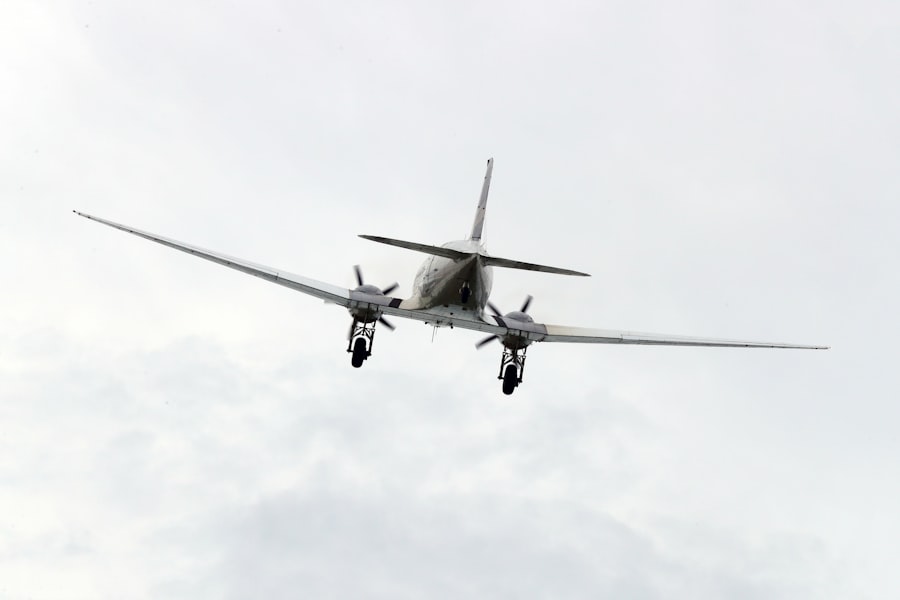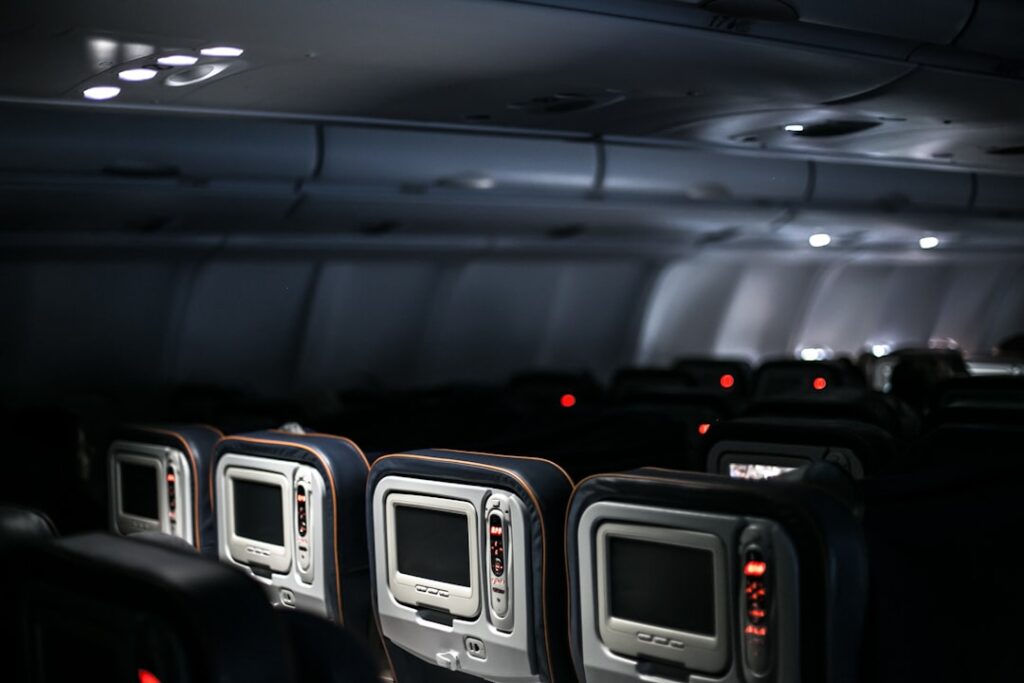The airline industry is a complex and multifaceted sector that plays a crucial role in global transportation. It encompasses a wide range of services, including passenger and cargo transport, maintenance, and ground handling. Airlines operate under various business models, such as low-cost carriers (LCCs) and full-service airlines, each catering to different market segments.
LCCs, like Southwest and Ryanair, focus on providing basic air travel at lower prices, often charging extra for services like checked baggage and in-flight meals. In contrast, full-service airlines, such as Delta and British Airways, offer a more comprehensive travel experience, including amenities like in-flight entertainment, complimentary meals, and loyalty programs. Understanding the dynamics of the airline industry is essential for travelers looking to navigate the complexities of air travel.
Factors such as fuel prices, labor costs, and regulatory changes can significantly impact ticket prices and airline operations. For instance, fluctuations in oil prices can lead to increased operational costs for airlines, which may subsequently be passed on to consumers through higher fares. Additionally, the competitive landscape of the airline industry means that airlines must constantly innovate and adapt to changing consumer preferences.
This includes investing in technology for better customer service, enhancing in-flight experiences, and expanding route networks to meet demand.
Key Takeaways
- The airline industry is complex and influenced by various factors such as fuel prices, competition, and demand.
- Timing your flight purchase can significantly impact the price you pay, with the best deals often found 6-8 weeks before your travel date.
- Utilize flight comparison websites to easily compare prices and find the best deals across multiple airlines.
- Flexibility in travel dates and destinations can lead to significant cost savings, as off-peak times and less popular destinations often offer cheaper flights.
- Keep an eye out for airline deals and promotions, such as flash sales and loyalty program offers, to save money on your flights.
Timing Your Flight Purchase
Understanding the Best Time to Buy Flights
Timing plays a crucial role in purchasing airline tickets. Research suggests that the ideal time to buy flights varies depending on several factors, including the destination, time of year, and even the day of the week. Generally, it is recommended to book flights at least six to eight weeks in advance for domestic travel and two to three months ahead for international trips.
Optimizing Your Booking Window
This window allows travelers to take advantage of lower fares before prices begin to rise as the departure date approaches. However, this is not a hard-and-fast rule; some airlines may offer last-minute deals to fill empty seats, particularly for less popular routes.
Day of the Week and Ticket Prices
Studies have shown that flights are often cheaper when booked on Tuesdays or Wednesdays compared to weekends when demand is higher. Additionally, flying during off-peak times—such as mid-week or during non-holiday periods—can yield significant savings. For example, a traveler looking to fly from New York to Los Angeles might find that flights on a Tuesday or Wednesday are considerably less expensive than those on a Friday or Sunday when many leisure travelers are heading out for weekend getaways.
Utilizing Flight Comparison Websites

In today’s digital age, flight comparison websites have become invaluable tools for travelers seeking the best deals on airfare. These platforms aggregate flight information from various airlines and travel agencies, allowing users to compare prices, flight times, and amenities all in one place. Websites like Kiwi, Trip, and WayAway enable users to filter results based on their preferences, such as non-stop flights or specific airlines.
This level of convenience empowers travelers to make informed decisions without having to visit multiple airline websites individually. Additionally, many flight comparison websites offer features that can help users identify trends in airfare pricing. For instance, some platforms provide fare alerts that notify users when prices drop for specific routes.
This can be particularly useful for travelers who have flexible schedules or are planning trips well in advance. Furthermore, these websites often include user-generated reviews and ratings of airlines, which can provide insights into the quality of service and overall travel experience. By leveraging these resources, travelers can not only save money but also enhance their overall travel experience by choosing airlines that align with their preferences.
Flexibility in Travel Dates and Destinations
| Flexibility | Benefits |
|---|---|
| Flexible Travel Dates | Lower prices, less crowded, more options |
| Flexible Destinations | Discover new places, better deals, unique experiences |
| Flexible Itineraries | Opportunity for spontaneous adventures, less stress |
Flexibility is one of the most powerful tools a traveler can wield when planning a trip. Being open to adjusting travel dates or even destinations can lead to substantial savings on airfare. Many airlines offer fare calendars that display the lowest prices available over a range of dates, allowing travelers to pinpoint the most economical options.
For example, a round-trip flight from Chicago to Miami might be significantly cheaper if booked for mid-week rather than over a weekend when demand is higher. Moreover, considering alternative airports can also yield cost savings. Major cities often have multiple airports serving them; for instance, travelers flying into New York City can choose between JFK, LaGuardia, and Newark.
Each airport may have different fare structures based on demand and competition among airlines. Additionally, exploring nearby destinations can open up new travel opportunities at lower costs. A traveler interested in visiting Paris might find cheaper flights into Brussels or Amsterdam and then take a train or budget airline to their final destination.
Taking Advantage of Airline Deals and Promotions
Airlines frequently run promotions and special deals that can significantly reduce the cost of air travel. These promotions may include flash sales, seasonal discounts, or limited-time offers that are often advertised through email newsletters or social media channels. Signing up for an airline’s loyalty program can also provide access to exclusive deals and early notifications about sales.
For instance, airlines like American Airlines and United frequently offer discounted fares to members of their frequent flyer programs. Additionally, utilizing credit card rewards can further enhance savings on air travel. Many credit cards offer points or miles for purchases that can be redeemed for free or discounted flights.
Some cards even provide sign-up bonuses that can cover the cost of an entire trip if used strategically. For example, a traveler who signs up for a credit card offering 50,000 bonus miles after spending a certain amount within the first few months could potentially book a round-trip flight to Europe at no cost by redeeming those miles.
Tips for Budget-Friendly Travel Planning

Savvy Accommodation Options
Websites like Airbnb and Vrbo offer unique accommodations that may be more affordable than traditional hotels while providing a more local experience. Additionally, staying outside major tourist areas can yield lower rates while still offering convenient access to attractions via public transportation.
Meal Budgeting Essentials
Dining out can quickly add up; thus, travelers should consider incorporating grocery shopping or cooking into their itineraries when possible. Many vacation rentals come equipped with kitchens that allow guests to prepare their own meals. Furthermore, seeking out local markets or food stalls can provide delicious meals at a fraction of the cost of dining in restaurants.
Strategic Planning for Savings
By being mindful of these expenses and making strategic choices throughout the planning process, travelers can enjoy enriching experiences without breaking the bank. By leveraging technology through flight comparison websites and remaining flexible with travel dates and destinations, travelers can uncover significant savings on airfare. Additionally, taking advantage of airline promotions and employing budget-friendly strategies for accommodations and meals will enhance the overall travel experience while keeping costs manageable.
With careful planning and informed decision-making, anyone can embark on memorable journeys without overspending.
If you’re planning your next solo adventure and looking for inspiration on where to go, you might find our article on the top destinations for solo travelers in 2024 helpful. It covers a range of exciting international locations that are perfect for individuals looking to explore the world on their own. Check out the full list and detailed insights by visiting Top 10 Best Places to Travel Alone Internationally in 2024. Whether you’re into vibrant cityscapes, serene landscapes, or something in between, this guide has something for every type of traveler.
FAQs
What are the different types of flights?
There are several types of flights, including commercial flights, private flights, charter flights, and cargo flights.
What is the difference between a direct flight and a non-stop flight?
A non-stop flight is a single flight between two airports with no intermediate stops, while a direct flight may have one or more stops, but passengers do not have to change aircraft.
What is the typical check-in time for a domestic flight?
For domestic flights, it is recommended to arrive at the airport at least 1-2 hours before the scheduled departure time.
What is the typical check-in time for an international flight?
For international flights, it is recommended to arrive at the airport at least 2-3 hours before the scheduled departure time.
What are the main factors that affect the price of a flight?
The price of a flight can be affected by factors such as the time of booking, the time of travel, the airline, the class of service, and the demand for the route.
What is the maximum weight for carry-on luggage on a flight?
The maximum weight for carry-on luggage varies by airline, but it is typically around 7-10 kg (15-22 lbs).
What is the maximum weight for checked luggage on a flight?
The maximum weight for checked luggage also varies by airline, but it is typically around 23-32 kg (50-70 lbs) for economy class passengers.
What are the main types of aircraft used for commercial flights?
The main types of aircraft used for commercial flights include narrow-body aircraft (such as the Boeing 737 and Airbus A320) and wide-body aircraft (such as the Boeing 777 and Airbus A380).

